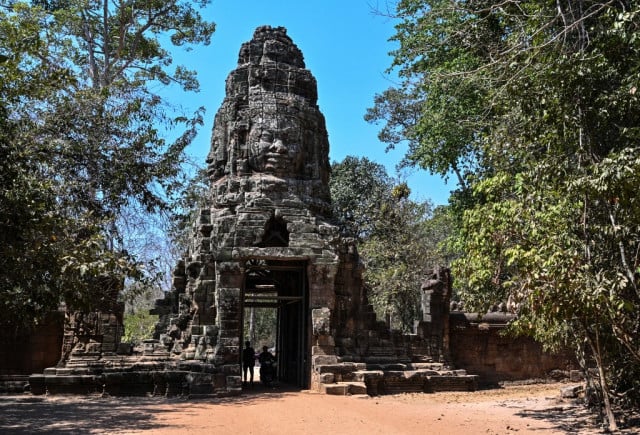Japan's New Flagship H3 Rocket Achieves Planned Trajectory in Key Test after Failed Debut Last Year

- By Associated Press (AP)
- February 17, 2024 5:10 PM
TOKYO — A Japanese flagship H3 rocket lifted off from a space station in southwestern Japan Saturday, successfully achieving its planned trajectory and releasing two small observation satellites in a key second test, overcoming its failed debut launch a year ago and buoying hope for the country to be competitive in the global space race.
The H3 rocket blasted off from a launch pad at the Tanegashima Space Center on time Saturday morning, two days after its originally scheduled liftoff was delayed due to bad weather.
The rocket successfully achieved the planned trajectory and released the two satellites, the Japan Aerospace Exploration Agency, or JAXA, said.
“We feel so relieved to be able to announce the good results," JAXA President Hiroshi Yamakawa told a news conference.
H3's main missions are to secure independent access to space and to acquire global competitiveness amid growing international demand for satellite launches. “We made a big first step today toward achieving that goal," Yamakawa said.
Saturday’s success is a boost for Japan’s space program following a recent streak of successes, including a historic precision touchdown on the Moon of an unmanned spacecraft last month.
Saturday's launch was closely watched as a test for Japan’s space development after H3 failed in its debut flight last March. JAXA and its main contractor Mitsubishi Heavy Industries have been developing H3 as a successor to its current mainstay, H-2A, which is set to retire after two more flights.
As the rocket soared and released its first payload successfully, project members at the JAXA command center cheered and hugged each other in a livestreaming footage. NHK television said some staff at a press center were seen crying with relief and joy.
JAXA H3 project manager Masashi Okada called the result “perfect,” saying H3 cleared all missions set for Saturday's flight.
“I now feel a heavy load taken off my shoulders. But now is the real start for H3, and we will work to steadily improve it.”
The H3 No. 2 rocket was decorated with thousands of stickers carrying cheering messages sent from well-wishers around the country.
In its debut flight last March, the rocket had to be destroyed along with its payload, the advanced land observation satellite, or ALOS-3, triggering disappointment and uncertainty about Japan’s space exploration plans.
JAXA and MHI have since identified and mitigated the possible electrical issues that led to the failure to ignite H3 rocket’s second-stage engine, and carefully rehearsed for the upcoming second test flight. Just to be safe, the rocket this time carried a mockup of the ALOS satellite, called VEP-4, which was not designed to be released.
Two real microsatellites — observation satellite CE-SAT-IE developed by Canon Electronics, and TIRSAT which was co-developed by a number of companies and universities — were piggybacked on H3 Saturday. Their makers said they were willing to take the chance as they see a growing market in the satellite business.
H3 is designed to carry larger payloads than H-2A at much lower costs of about 50 billion yen ($330 million), to be globally competitive.
Masayuki Eguchi, head of defense and space segment at Mitsubishi Heavy, said his company hopes to achieve more price competitiveness after about a dozen more launches.
Japan's space program has made a streak of successes recently. JAXA last month made the world's first “pinpoint” moon landing and capturing of lunar data by the unmanned spacecraft SLIM that had been launched from the H-2A rocket, days after the 48th H-2A rocket successfully placed a spy satellite into its planned orbit.















